The Rock-Hewn Churches of Lalibela, Ethiopia

The Church of St. George, cut into the bedrock at Lalibela
Last week I discussed the unique blend of Baroque and Abyssinian styles that created the Castles of Gondar, Ethiopia. I’ve also written on the splendid ancient civilization of Axum in the same country. But Ethiopia has a lot more to offer than that. The most famous historic sites, and certainly the most impressive, are the rock-hewn churches of Lalibela.
In the late 12th century, much of what is now northern and central Ethiopia was under the rule of the Zagwe dynasty. Ethiopia had been Christian since 330 AD and had developed its own liturgy, practices, and traditions. Like with all other Christian lands, many Ethiopians dreamed of going on pilgrimage to Jerusalem and Bethlehem. For some time this was possible, although it involved a long trek overland to catch a boat on the Red Sea, then another trek across the desert to get to the holy cities. But as the Crusades turned the Holy Land into a battleground, it turned a difficult journey into an impossible one. The rulers of the Zagwe dynasty came up with a unique solution.
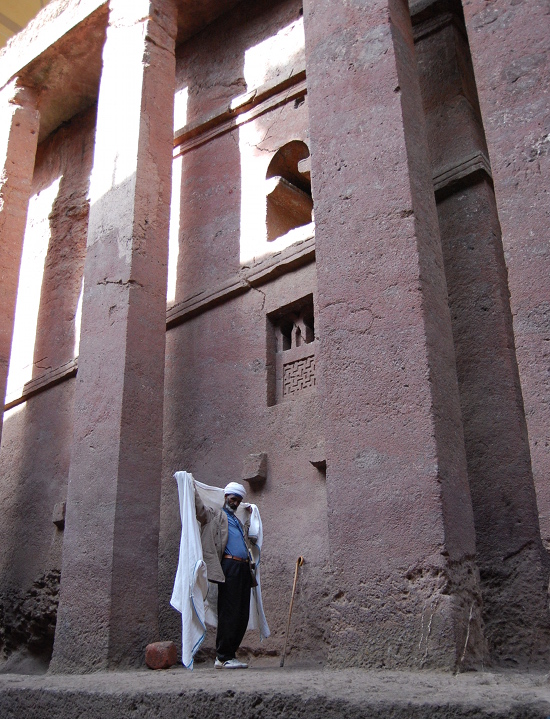
Biete Medhane Alem (House of the Savior of the World),
the largest rock-hewn church in the world
If the people couldn’t go to Jerusalem, why not build a New Jerusalem in Ethiopia? And why not go one better? The famous churches of the Holy Land were beautiful, but they were, after all, just buildings. The rulers of Ethiopia decided to do something different. Instead of simply building churches, they excavated them out of the bedrock. The rock at Lalibela is a red volcanic stone that’s fairly easy to work, but the sheer magnitude of the task is still mind boggling.
The churches were first commissioned by King (now Saint) Gebre Mesqel Lalibela, although the vast amount of work involved must have taken more than just his lifetime. To dig out eleven full-sized churches, plus countless tombs and hermit’s caves, took an incalculable number of hours. There are also trenches connecting the churches to one another and a network of catacombs for the religious workers at the site. The work stretched over several generations to create one of the second most important pilgrimage sites for Ethiopian Christians after Axum, where the Ark of the Covenant is said to be kept in a hidden room in the main church.
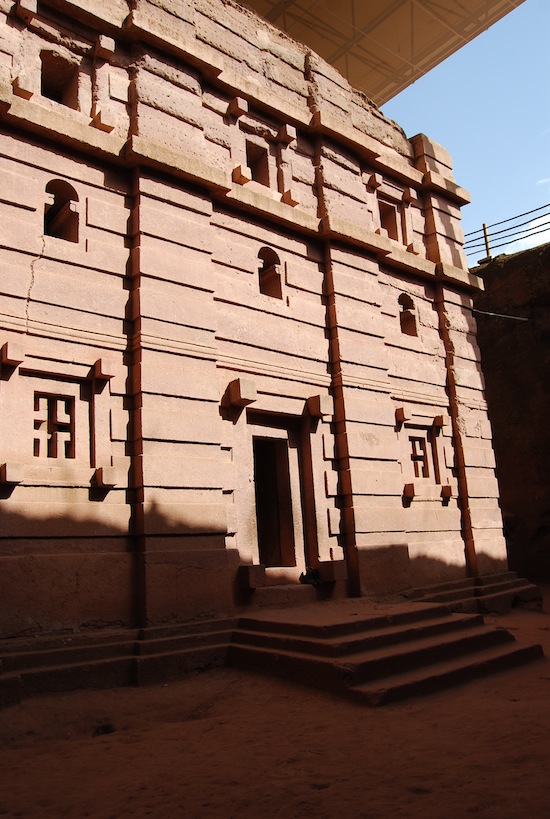
Biete Amanuel (House of Emmanuel), possibly a Zagwe royal chapel
The churches are laid out to replicate Jerusalem and the Holy Land, with names such as House of Golgotha Mikael, House of Mary, and Bethlehem. The river that runs through Lalibela is called the River Jordan. As you can see from the photos, many of the churches include subtle details like grilled windows and bas-reliefs. The interiors are richly adorned with colorful carpets and wall hangings. Unfortunately, water damage and seismic activity have damaged some of the structures, and some are now covered by ugly, although essential, metal roofs.
The churches at Lalibela aren’t the only rock-hewn churches in Ethiopia, but they are the greatest concentration of these impressive feats of engineering and some of the best preserved. And 800 years after they were built they are still a focal point of Ethiopian Christianity. Priests and monks gather in them to pray and study religious texts, and at dawn the churches are filled with chanting worshipers as the air is laden with incense.
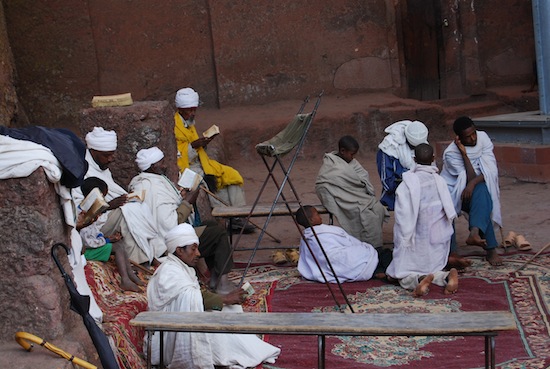
Priests praying beside one of the churches. Priests, monks,
and lay worshipers tend to pray and study inside the pits surrounding the
churches, as these are considered within the sacred precincts
Lalibela is one of those places that sticks with you, no matter how many of the world’s wonders you have seen. Harar in eastern Ethiopia is another of those places, and I’ll get to that in a later post when I review a book written by a colleague who lived there for several years. Lucky guy, I only got to stay for a few months! If you’re looking for a travel destination filled with history, culture, and the world’s best coffee, give Ethiopia a try. Feel free to contact me for help if you’re serious about going. I think every well-traveled person should see Ethiopia.
Images copyright Sean McLachlan and Almudena Alonso-Herrero. More below!
Sean McLachlan is the author of the historical fantasy novel A Fine Likeness, set in Civil War Missouri, and several other titles, including his post-apocalyptic series Toxic World that starts with the novel Radio Hope. His historical fantasy novella The Quintessence of Absence, was published by Black Gate. Find out more about him on his blog and Amazon author’s page.
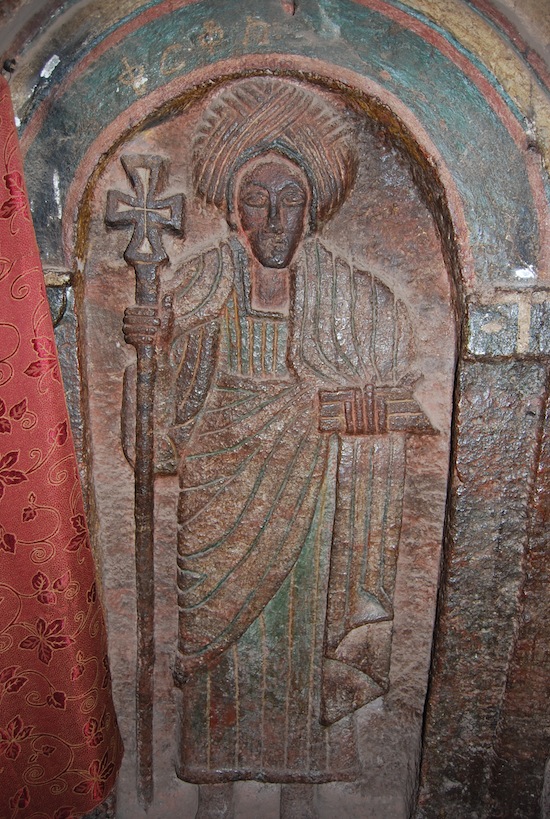
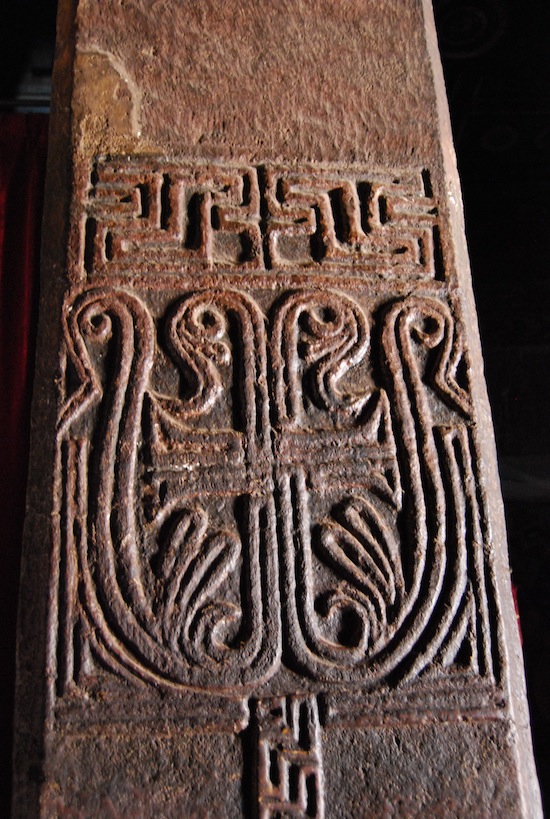
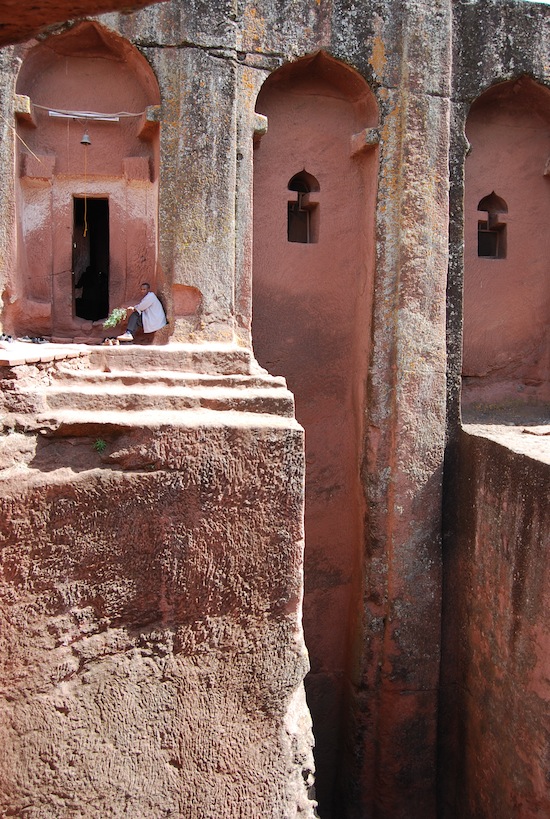
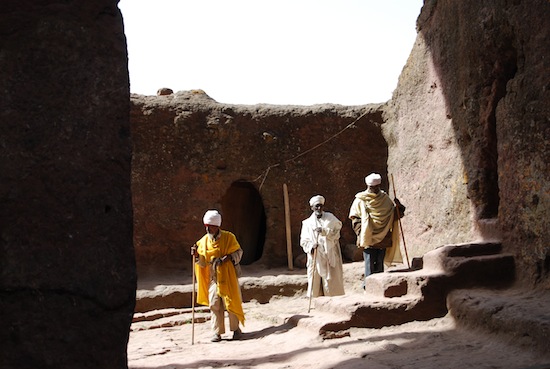
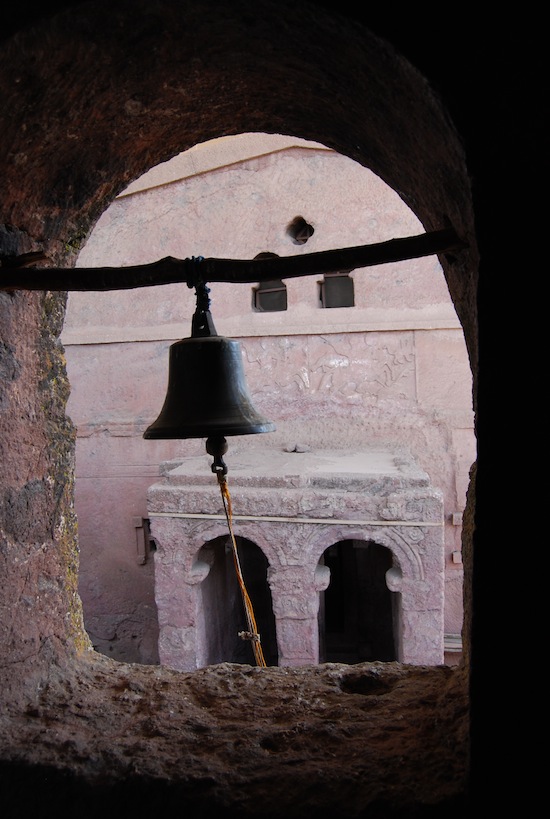
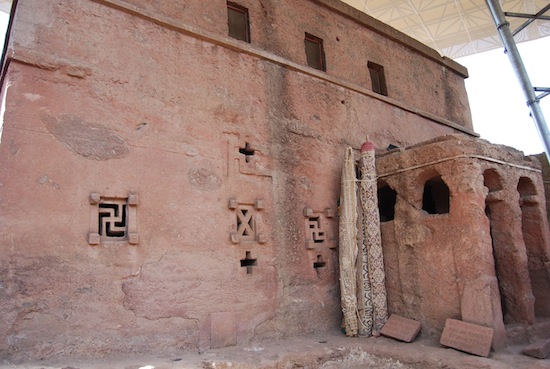
Biete Maryam (House of Mary), possibly the oldest church at Lalibela. It’s a replica of the Tombs of Adam and Christ.
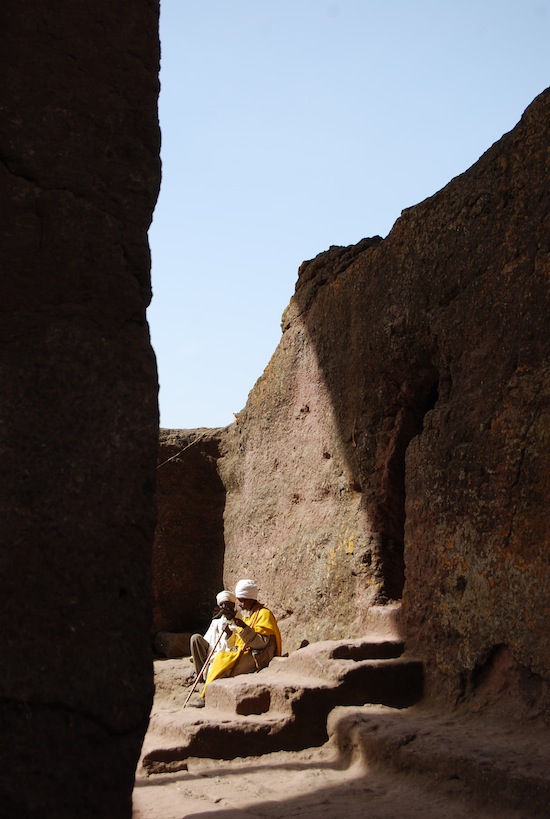
Thank you Dear Sean McLachlan for perfectly describing Lalibela.
What a beautiful, amazing place. I’d never heard of Lalibela before. Thank you for making my world bigger.
Yes it is mind boggling. Thank you Sean McLachlan. But one thing that I must comment on is that Ethiopia had been Christian not since 330 AD but since 34 AD. Correct me if I am mistaken.